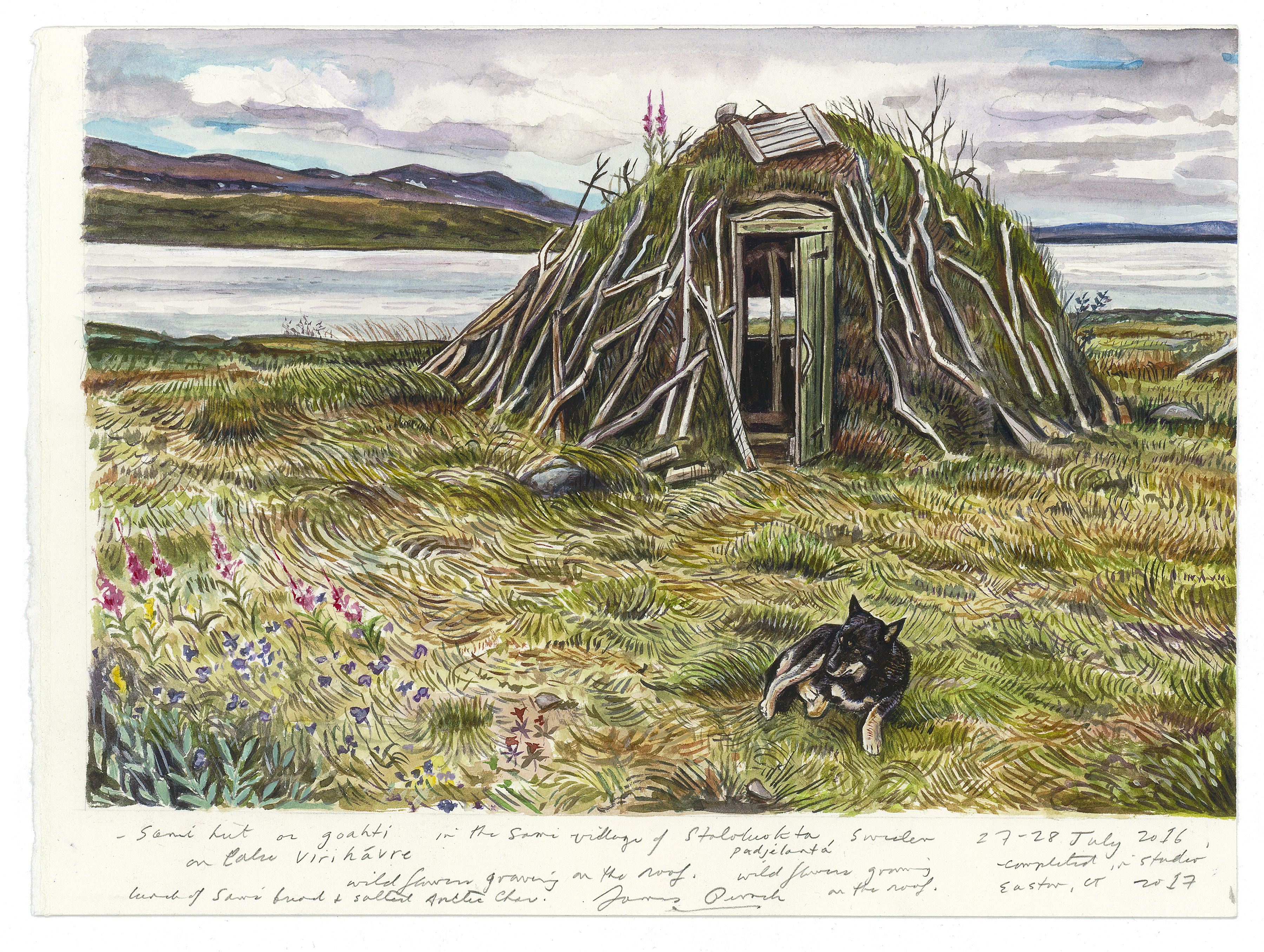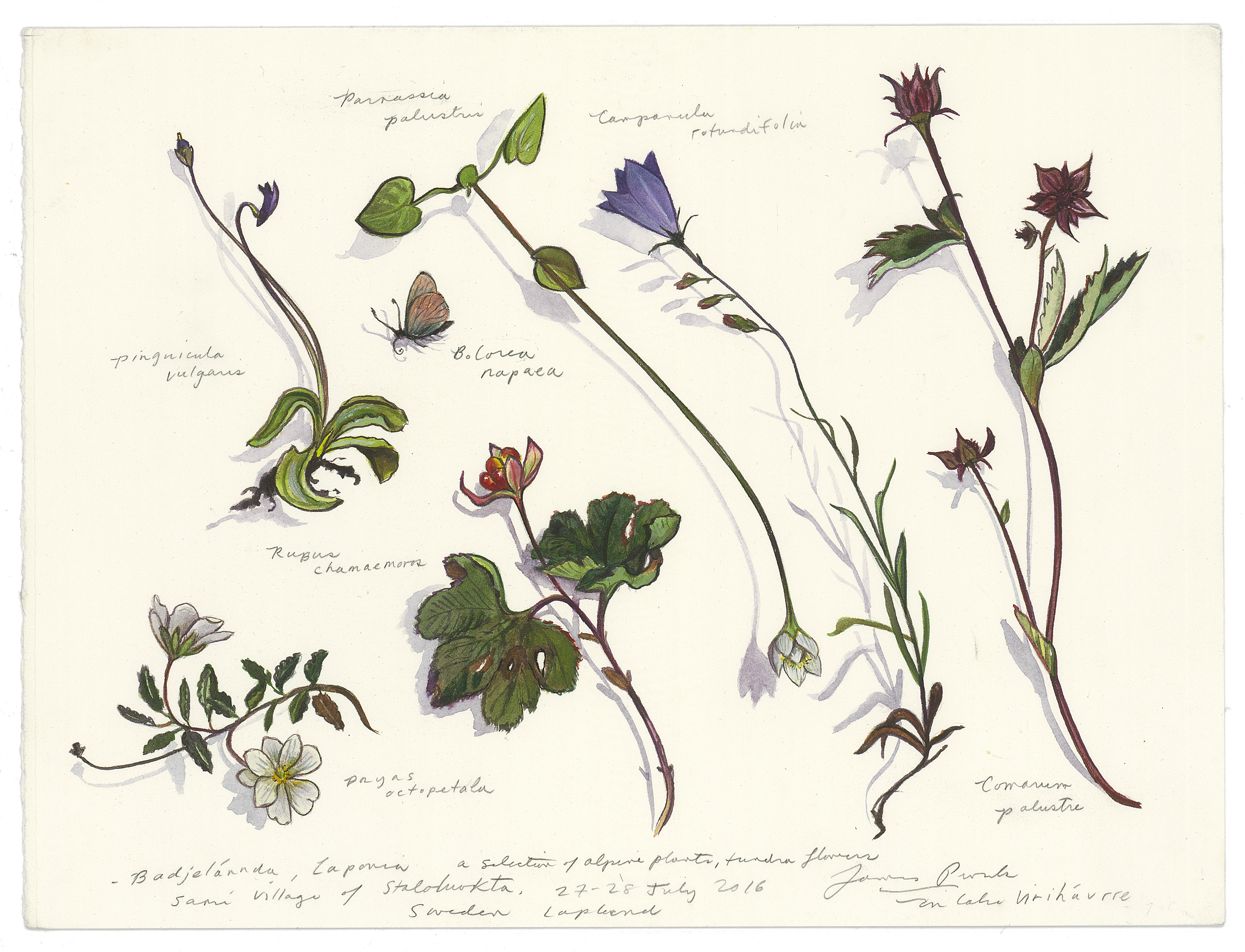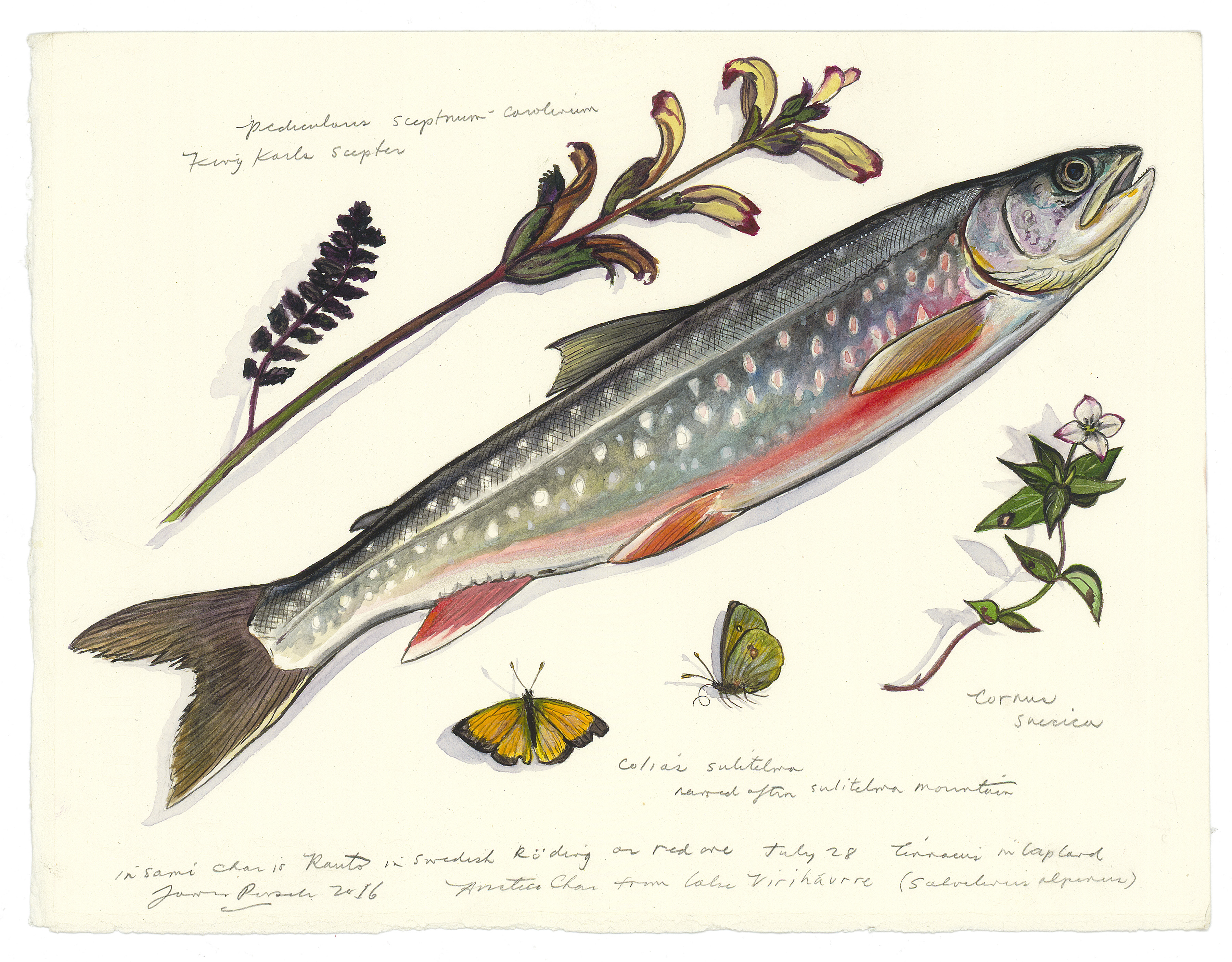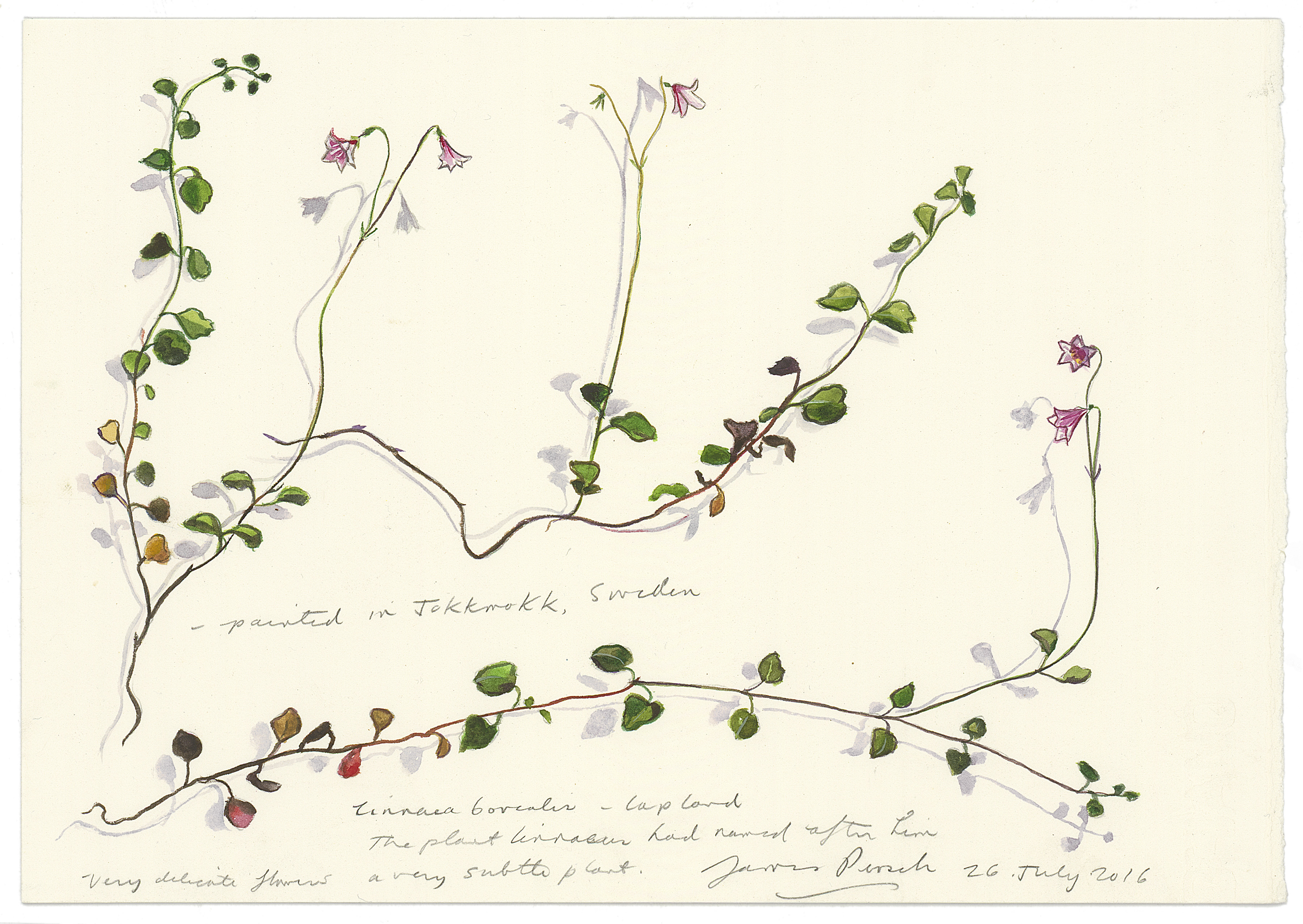A botanist in Swedish Lapland

The plan was to retrace part of a journey that Carl Linnaeus made in 1732 when he was 25, from Uppsala, just north of Stockholm, to the northernmost region of Sweden, known as Swedish Lapland. Linnaeus kept a detailed journal of his travels, often called his “Lapland Journal,” with maps of the mountains, rivers and lakes, drawings and his squiggly handwriting.
I came to Swedish Lapland in part to try to get to know Linnaeus better but also to see if I was judging him unfairly. Linnaeus was the man who invented that clean two-name system, binomial nomenclature, which gave a generic and specific epithet (genus and species) to organisms — like Homo sapiens for humans or Salmo trutta for brown trout. Those names are steady and dependable, but as I grew older and spent more time in nature, I began to see and appreciate nature on its own terms and learned that it is messy, chaotic and overwhelming and does not always fit into neat categories, as we’d like it to.
I think what bothered me was his hubris. Before binomials, names of plants in books were lists or strings of words that formed a kind of nuanced description. Plants and animals already had names in indigenous languages, and Linnaeus, in a show of imperialism, renamed them with his Latinisms. He believed he could take nature — holistic, fluid and constantly changing — and fragment, label and systematize it. Then again, he lived more than a hundred years before Darwin synthesized ideas of an evolving world, and in his view of nature, things didn’t change over time.
By the end of his life, Linnaeus had applied his binomial names to roughly 14,000 species. Today more than 1.5 million have been anointed with a genus and species name, and there are said to be in excess of 10 million species on the planet that are still nameless.
On the trip, I was hoping to explore his virtues, among which was a clear and profound love of beauty and diversity in nature, with a particular passion for flowering plants, specifically the ones that grew in his native Sweden. Along with Alfred Nobel, Linnaeus is among the country’s most cherished national heroes. His face is on the 100 kronor note and his favorite flower, which he named after himself, Linnaea borealis, appears on the 20 kronor note.

Linnaeus left for the big adventure of his life on his birthday, May 23 — which also happens to be my birthday — and traveled up the coast of the Gulf of Bothnia from Uppsala toward Finland, making periodic trips to explore the interior. My travel companions and I chose to follow his longest inland route, from the coastal town of Lulea on the Bay of Bothnia, following the Lule River toward the tiny seasonal village of Staloluokta in the mountains, where the indigenous Sami people summer their herds of reindeer.
Linnaeus’ entire trip took more than five months, from May to October, and covered roughly 2,000 miles. We had set aside about 10 days last July. At this time of year, Linnaeus had reached the farthest and most remote part of his journey, an alpine region, where he was driven to rapture by the diversity of flowering plants. Today it is a national park known as Padjelanta.
The flora of Lapland had been explored somewhat by his teacher and mentor, Olof Rudbeck the Younger in 1695, but Linnaeus wanted to give a more complete account and collect fresh plant specimens because those collected by Rudbeck had burned in a fire in 1702.
But the main purpose of his trip, as outlined by his patrons at the Royal Society of Sciences in Uppsala, was to discover and record anything of economic interest for mother Sweden (impoverished after the multiyear Northern Wars) — including ethnographic information about the Sami, such as the medicinal uses of plants — not unlike a modern bio-prospector in South American rain forests today.
We referred to the members of our little pilgrimage as “team Linnaeus”: Hakan Stenlund, a good friend who grew up in and still lives in Lapland; Staffan Muller-Wille, a half-Swedish half-German scholar of Linnaeus; and Kristof Zyskowski, an ornithologist at the Yale Peabody Museum.
Staffan brought a facsimile of Linnaeus’ actual journal in Swedish so we could see what he wrote and drew. He told me that you cannot get a sense of the beauty of Linnaeus’ prose in the English translation. “In many ways it is among the first early modern travel journals,” he said. “What separates it from earlier travel journals is the clear sense you get of the author as an individual.”

Uppsala, where we began our journey, was home to Linnaeus and the university at which he taught. His summer house and garden at Hammarby, a few miles outside town in the rural countryside, is a must-see for anyone who is a fan of plants. We visited his grave at the cathedral in Uppsala.
From Uppsala, we flew to Lulea, a seaside town of 70,000 at the mouth of the Lule River. Linnaeus traveled from here into the mountains by foot, by horseback, by boat, often with Sami guides. By the late 1600s the Sami had already lost their native religion to Christian missionaries and had become “tourist guides of their own culture’s destruction,” as historian Lisbet Koerner writes in her book “Linnaeus: Nature and Nation.” But the Sami were still herding reindeer seasonally from high country to low when Linnaeus came, as they do to this day.
We traveled primarily by car. Among the tools I brought with me were graphite pencils, watercolors and paper. Linnaeus made many drawings as part of his fieldwork, and the Lapland journal is full of them. Drawing was the only way for him to visually document the things he saw. He did, of course, collect many plant specimens, but they were immediately flattened and did not show a flower or plant as it looks in life. He drew birds and fish and plants and Sami tools and structures, the rolling mountains, and even himself looking at the midnight sun.
On a walk along the Lule River where it met the bay, we found a species of willow, Salix pentandra,a leaf of which Linnaeus drew near this spot. Staffan plucked a leaf from the tree and laid it on the facsimile of the journal. It matched perfectly, as if Linnaeus had traced that very leaf.
Little by little we made our way north and west. About 12 miles from the village of Jokkmokk we saw our first reindeer, and shortly after, a sign on the roadside that we had entered the Arctic Circle. In Jokkmokk, a town of about 2,500 people, Hakan brought us to a local woman, Eva Gunnare, who gives “flavor performances” — her interpretations of different Sami foods, meant to evoke each season (Sami divide the year into eight seasons) and convey indigenous plant knowledge.
We ate pine bark bread, sipped on birch sap and ate a dessert with lingonberry, crowberry, bog bilberry and blueberry. Eva also served us pieces of reindeer smoked by her Sami ex-husband, and traditional bread, or gahkku. The Angelica plant, thought in medieval times to cure the plague, is one that Eva said was the “main vegetable of the Sami” and a plant that Linnaeus was particularly interested in for economic reasons. Eva made candy from segments of the stem of this tall plant. In the woods not far from her house, Kristof spotted the diminutive Linnaea borealis in bloom.

Onward from Jokkmokk, in Kvikkjokk, a village with fewer than 100 year-round residents, the road dead-ends in mountains and tundra. This is the point from which hikers approach Padjelanta National Park. It is a four-day trek to the vast Lake Virihaure where we would stay. In the interest of time we took a helicopter shuttle, a common means for Sami herders to travel from town up to summer pasture.
Many Sami make money from selling reindeer meat, but most need to supplement their incomes with part-time jobs, taking work as welders or carpenters in Jokkmokk. Some told me it was a difficult transition from nature to civilization and back.
The helicopter trip from Kvikkjokk to the summer outpost of Staloluokta provided stunning views of the Tarra valley, braids of rivers swollen with snowmelt, and rugged tundra lands, above the tree line. The helicopter landed on the shore of Lake Virihaure. Backpackers, Sami reindeer herders, botanists and the odd Linnaeus pilgrim are the only humans you will find here.
The tundra hills surrounding the lake and occasional patches of dwarf birch are home to more than 450 species of plants, many of them still blooming when we arrived. It is hard to time the peak of blossoming here, and we were a week or so past prime, as well as a week past the true midnight sun. Mosquitoes were in abundance, but there was enough of a breeze off the lake to keep them tolerable.
We walked up to 10 miles a day, and often into the night. Midnight on the lake was amazing — somewhere between night and day, hovering in a platinum stillness. It was hard to stop gazing at the water when we should have been sleeping.
In this country, Linnaeus was enraptured, botanizing among the unique high elevation tundra flowers. The ground at first glance is like a greenish carpet, but up close you notice myriad diminutive flowering plants. If you get down on your hands and knees it feels as if you’re drifting over a coral reef. Linnaeus writes:
“It seemed as if I were entering a new world; and as I climbed higher I did not know whether I was in Asia or Africa, for the soil, the situation and all the plants were strange to me. … There were so many that I feared I was taking away more than I would be able to deal with.”
In “Flora Lapponica,” a later work in which he synthesizes his plant discoveries in Lapland, Linnaeus describes how he named one of the alpine plants Dryas octopetala. He writes, “I have called this plant Dryas after the dryads, the nymphs that live in oaks, since the leaf has a certain likeness to the oak leaf.”
We found it, a gorgeous white flower with eight petals that quivered in the cool breeze, and I painted it back at the backpackers’ hut where we stayed. Linnaeus made a drawing of it in the Lapland journal. At times like this I questioned my distaste for the man and his work — many of his Latin names are thoughtful and carry physical and quantitative characteristics, metaphor and allusions to myth.
We fly-fished in the creek entering the lake and caught wild brown trout that Hakan said had been introduced from Norway, only a few miles to the west. Only one fish was native here, the Arctic char.
Later in the day we walked into a cluster of Sami summer huts, or goahti, beautiful sod-roofed buildings with wildflowers growing on them, and inside of one watched a woman make bread on an open fire. We sat on reindeer skins laid out around the fire pit. She stoked the coals and hung some char in a basket over the fire to impart a mild smoked flavor to the salted fish.
The fresh Sami bread and fish together were as good as anything I’ve ever eaten. I looked around at the beautiful structural interior of the building coated lightly with soot. It looked precisely like the one Linnaeus had drawn in his journals in 1732.
On his return, Linnaeus lied to his patrons at the Uppsala Science Society, greatly exaggerating his hardships, saying that he had traveled 4,500 miles, double the amount he actually traversed (he was being paid by the mile), going so far as to draw an entire inland leg on his map that he never made. Lisbet Koerner, the historian, calculates that during his five-month journey, only 18 of his days in Lapland were spent outside the homes of Swedish homesteaders or on the coast.
To my mind, his fibs do not diminish his accomplishments; he had uncanny skills of observation and an incredible eye for tapping into the order of nature, such as it exists, within a larger cloak of chaos. What comes across in his journal as romantic exuberance for the beauty and harshness of the Lapland countryside is not overstated. Swedish Lapland is dazzling and mysterious, a wonderful place to visit, perhaps now as much as ever because of a Sami cultural revival afoot.
Linnaeus was enterprising and opportunistic, but he left us with many gifts, systems for helping us to see and communicate nature that “conform to the manner in which the human mind works,” as biologist E.O. Wilson told me. It is very possible that Darwin would not have been able to envision his ancestral tree of life without the Linnaean hierarchy (his other most lasting innovation, a structure for organizing nature into groups from species, genera, families and orders on up to kingdoms).
As for that binomial system I had such an aversion for, I learned that it was something Linnaeus actually came up with incidentally, as a convenient shorthand while he worked, and that he didn’t even approve of it. Linnaeus didn’t realize until later in life that his accidental invention would become his most enduring legacy.
I’ve come to realize that my agitation was not really any fault of Linnaeus’ but the larger problematic relationship between word and world, names and nature — which has become a lifelong inquiry. Nature is one interconnected system, but language necessitates that we chop it up and label the pieces, giving a false impression of what it’s really like.
Once we put a name on something, as Linnaeus did compulsively, we’ve identified ourselves as the observer and the named thing as the observed — a barrier is placed between, lines are drawn. If I am observing, it suggests that I am separate from nature, but in some of my best and most memorable moments I am part of it, when a certain amount of the knowing is shed. Such a moment happened on the vast lake in Lapland as we watched a thousand shades of day flirt on the horizon with darkness in colors beyond names and perhaps even beyond language.
James Prosek, an artist and writer, is working on a book about how and why we name and order the natural world.